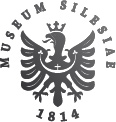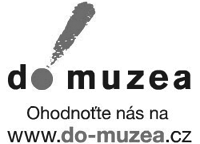ČASOPIS SZM SÉRIE B – VĚDY HISTORICKÉ
LXIV/2/2015
OBSAH/CONTENTS
STUDIE/STUDIES
Milan MYŠKA: Techniker-Verein in Troppau / Spolek techniků v Opavě / Techniker-Verein in Troppau / Association of Technicians in Opava
(s. 101–120)
Abstract
The study deals with establishment and development of the Association of Technicians in Opava in the years
1887‒1918. It associated technicians and engineers not only from Opava with the aim to facilitate their further
professional development (lectures, educational excursions, and library), strengthen their self-confidence and
awareness of being part of the profession. The association made also an effort to improve the respect and prestige
of technicians within the newly forming educated townspeople and society itself. During the first two decades
of its existence, the association enhanced the development of Opava and the whole Silesia through various
innovative projects, consulting and opponent activities and through offices some of the members held in the municipal
and land self-governing bodies.
Keywords: Association of Technicians, professional development, forming of civil society, self-government, effort to improve social prestige of technical profession
Jiří JUNG: K podílu Carla Johanna Boguslawa Lüdeckeho na regotizaci zámku v Hradci nad Moravicí / Carl Johann Boguslaw Lüdecke's Share in the Regotization of the Hradec nad Moravicí Castle
(s.121–128)
Abstract
In June 1861, architect Carl Lüdecke from Wrocław visited the Hradec nad Moravicí castle to prepare the project
of its complete re-gotization for the Duke Maria Lichnowsky. However, the study of Marie Lichnowsky's
diary proved that many of the changes which have originally been attributed to Lüdecke were done before his
contract. It brings up questions concerning Lüdecke's share in the re-gotization of the castle and also in the
authorship of the neogothic solutions.
Keywords: Neogothic, Silesia, Hradec nad Moravicí, Carl Maria Lichnowsky, Marie Lichnowsky, Carl Lüdecke, Leonard Dorst von Schatzberg, Adolf Gloger, Carl Ferdinand Busse
Jiří KRÁTKÝ: Johann Kuttler – varhanář slezského pohraničí / Johann Kuttler – Organ Maker of the Silesian Borderland
(s. 129–150)
Abstract
Johann Kuttler (1769 in Loosdorf / Lower Austria – 1832 in Skorošice) is one of the nearly forgotten personalities
of musical instruments manufacturing not only in Austrian Silesia. His organ building workshop was in
a small border town Vidnava, thus we can come across his instruments not only in Austrian Silesia but also on
the other side (now Polish) of the border as well as in Moravia or Lower Austria. Even though only a small part
of his work was preserved, we can conclude that he was a workmanlike organ maker.
Keywords: Johan Kuttler, organ, musical instruments, Vidnava
Artur Kwaśniewski: Śląskie, morawskie, środkowoeuropejskie? Pytanie o architektoniczno-ideowe źródła rezydencji księstwa opawskiego z „doby renesansu" / Silesian, Moravian, Central European? The question of the formal and ideological sources of Renaissance residential architecture in the Duchy of Opava
(s.151–164)
Abstract
This article aims to make contribution to the study of cultural identity of the Duchy of Opava in the Early Modern
Period. The research is focused on the architecture of castles and manor houses in the period between the
years 1511 and 1613, when the Opavian territory was directly subordinate to the kings of Bohemia. The author
attempts to answer the question of impact of this political aspiration on the architecture in the circle of Opavian
nobility. He tries to analyse three aspects of the traditional residential architecture: ideological concept, functional
program and the language of form. Only a few of the analysed solutions can be regarded as an example
of artistic transfer from Moravia. He advocates a wider range of future research on the identity of architecture
on the Moravian-Silesian border.
Keywords: Duchy of Opava; castles and manor houses architecture; Renaissance architecture; architectural
Language
Jiří KNAPÍK: Slezský kulturní ústav v Praze 1945–1948. Struktura, osobnosti a cíle / Silesian Cultural Iinstitute in Prague 1945–1948. The structure, personalities and goals
(s. 165–176)
Abstract
This study deals with the new stage of the Prague Society activities, which has associated the Czech intelligence
from Silesia since the early 20th century, first under the name Slezan, later Silesian National Unity and since
1939 the Silesian Cultural Institute. The study focuses on the structure of this association (management, working
committee, unions etc.) and personalities that have shaped the activities of the association since 1945.
Keywords: Silesian Cultural Institute; Silesia; Prague; 20th century
Lucie AUGUSTINKOVÁ: Stavební vývoj venkovského domu čp. 98 ve Vápenné / Construction Development of Rural House no. 98 in Vápenná
(s.177–184)
Abstract
House No. 98 in Vápenná (Jeseník region) was built as a village house in the 2nd half of the 18th century probably
as a result of the attempts of the lords to increase the numbers of cotters. It represents common rural house
with a crosswise middle hall, where a smoke kitchen used to be, and with southern residential part. The material
composition of the building in the context of its construction development gives an interesting evidence of
the changing construction tradition in Jeseník region in the Late Modern Times.
Keywords: rural house, Vápenná, construction materiál
KRATŠÍ PŘÍSPĚVKY/SHORT STUDIES
Petr TESAŘ: Neznámý plánek východní části opavského kostela sv. Ducha z doby kolem roku 1777
(s. 185–186)
RECENZE/REVIEWS
(s. 187–195)
Aleš Binar, Hospodářský a sociální vývoj Hlučínska v letech 1945–1989 (Nina Pavelčíková), Jiří Šíl a kol., Země a její muzeum (Jaromíra Knapíková), Martin Strakoš, Po sorele brusel, kov, sklo, struktury a beton. (Jakub Ivánek), Petr Domanický, Lesk, barvy a iluze. Architektura Plzně v 60. letech (Pavel Šopák), Michael Hochedlinger, Österreichische Archivgeschichte (Zdeněk Kravar), Libor Martinek, Jiří Urbanec. Vědecký profil a výběrová bibliografie (Jiří Šíl).
KRONIKA/CHRONICLE
(s. 196–200)
Václav Štěpán (Blažena Przybylová), Setkání českých archivářů v Poděbradech (Marek Skupien), Seminář Výzdobné techniky kovů II (Jana Stixová), Moderní způsoby evidence, archivace a digitalizace v prostředí paměťových institucí (Barbora Honková), Workshop „Konzervování/restaurování historického textilu (Pavel Petr).
Poslední aktualizace článku: 19.06.2020
Vytisknout celý článek







